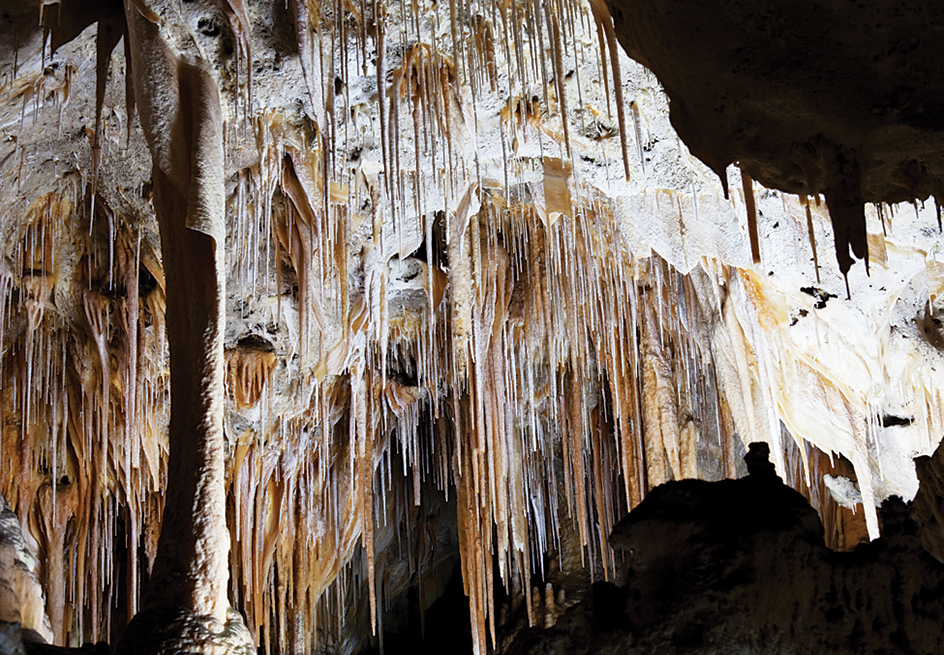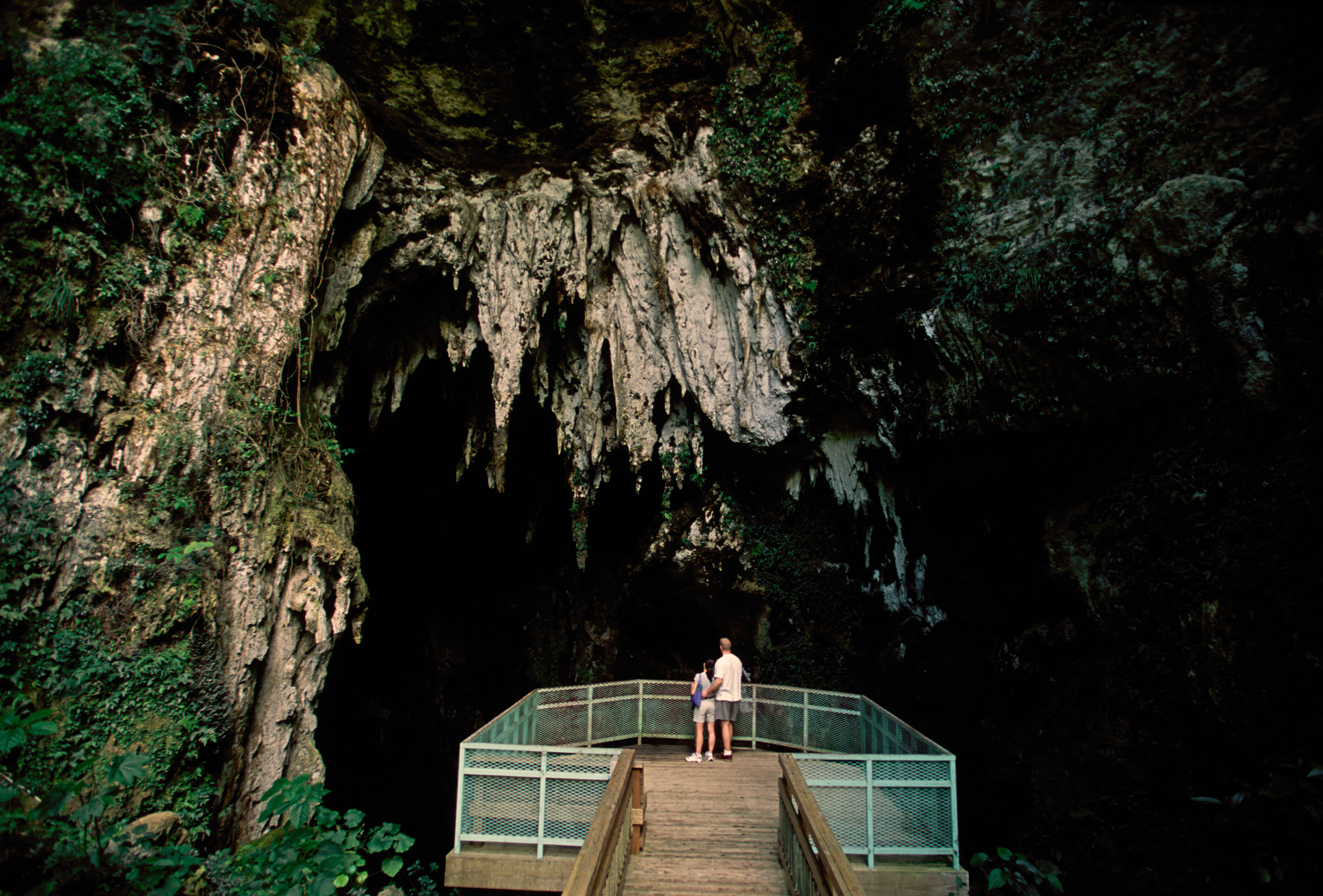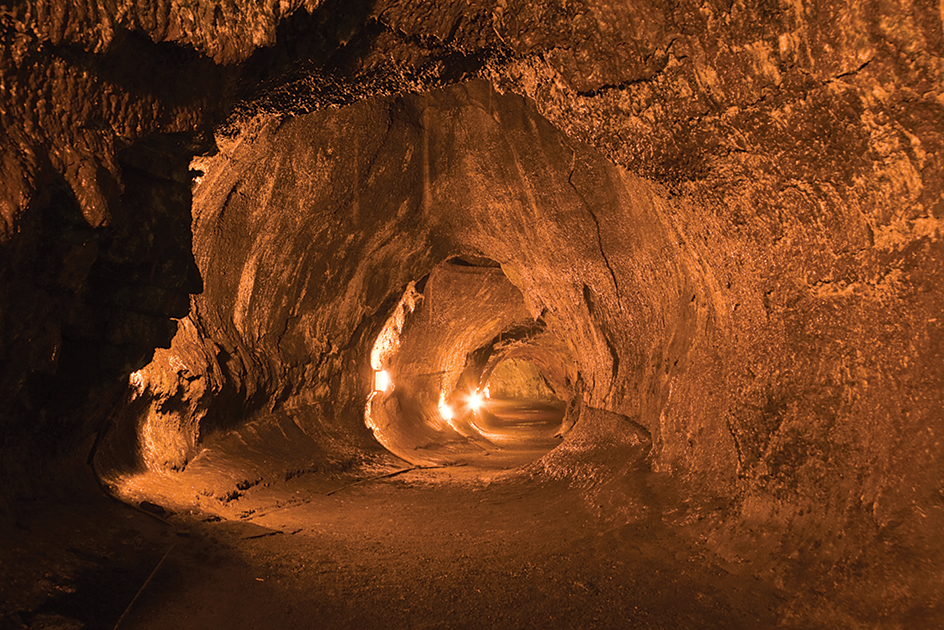Cave, also called cavern, is a naturally hollow area in the earth that is large enough for a person to enter. Some caves consist of a single chamber only a few yards or meters deep. Other caves are vast networks of passages and chambers. The longest cave ever explored is the Mammoth-Flint Ridge cave system in Kentucky. This cave has about 340 miles (550 kilometers) of explored and mapped passageways, but geologists think that it extends even farther.
The interior of a cave is a dark, damp place where sunlight never enters. However, artificial light supplied by explorers may reveal a strange underground landscape filled with beautiful, oddly shaped mineral deposits called speleothems. Many caves also have underground lakes, rivers, and waterfalls.

Some of the most spectacular caves are popular tourist attractions. These caves have been equipped with pathways and electric lights. However, thousands of caves remain in their natural state, and many new caves and passages are discovered each year.
The scientific study of caves is called speleology. Scientists who study caves and the organisms that live in them are known as speleologists. Many people enjoy caving, the hobby of exploring and mapping caves.
How caves are formed.
Most caves are formed in limestone or in a related rock, such as marble or dolomite. Such caves, called solution caves, form as underground water slowly dissolves the rock. This process takes thousands of years. It begins when surface water trickles down through tiny cracks in the rock to a zone that is saturated with water. The topmost level of this saturated zone is called the water table. Water flowing above and below the water table dissolves some of the rock, forming passages, chambers, and pits.

Limestone and similar rock are only slightly soluble in water. But the water that trickles down from the surface contains carbon dioxide, which has been absorbed from the air and soil above the rock. The carbon dioxide forms a mild acid in the water, and this acid helps dissolve the rock.

Eventually, the water table may drop below the level of the cave. Or, the cave may be raised above the water table by a gradual uplifting of the ground. Most of the water then drains out, and air fills the cave. A surface stream may enter the cave and flow through it. The stream continues to dissolve the rock, enlarging the cave. Connections from the cave to the surface may develop in several ways. For example, the rock above part of the cave may collapse, forming a vertical entrance called a sinkhole. A horizontal entrance may develop on a hillside or a valley slope, especially at a point where a spring or stream flows from the cave.

Other types of caves include lava tubes and sea caves. Lava tubes form from molten lava. As lava flows down a slope, its outer surface cools and hardens, but the lava beneath remains molten. The molten lava continues to flow and eventually drains out, forming a cave. Lava caves lie near the surface of the earth and commonly have many openings in their thin roof. Sea caves form along rocky shores as the surf wears away weak areas of the rock. Inland, flowing water can carry rock away from weak areas of rock such as granite, forming caves.
Speleothems.
After most of the water has drained from a cave, water may continue to seep in through cracks in the rock. This water often contains dissolved minerals. As it enters the cave, some of the minerals crystallize and are deposited as speleothems. Although speleothems are commonly white, they may be of many colors, depending on the minerals that form them.
The best-known kinds of speleothems are stalactites and stalagmites. Stalactites are iciclelike formations that hang from the ceiling of a cave. Stalagmites are pillars that rise from the floor. A stalactite and a stalagmite may join and form a column. See Stalactite; Stalagmite.
Many other kinds of speleothems also form in caves. Drapery consists of thin sheets of rock that hang from the ceiling. Flowstone develops where a thin film of water flows over the walls and floor of a cave, depositing sheets of minerals. Gypsum flowers are delicate spiral crystals that sprout from porous rock. Helictites are strangely twisted cylinders that grow from the walls, ceiling, or floor of a cave, or from other formations.
Stalactites
Life in caves.
Wall paintings, stone tools, and skeletal remains found in caves show that people lived there thousands of years ago. Today, many kinds of animals, including a small number of human beings, use caves as permanent shelters. See Cave dwellers.

Animals that live in caves include birds, crickets, lizards, raccoons, rats, salamanders, and spiders. Large numbers of bats roost in caves during the day and fly out at night to hunt for insects. The guano (manure) of bats provides food for the countless beetles, millipedes, flatworms, and other creatures that live in caves.
Various species of animals known as troglobites live in the dark innermost part of most caves, where there is no light, wind, or change in temperature and humidity. Such animals include certain beetles, fish, salamanders, and spiders. Most troglobites are blind and have a thin, colorless skin or shell. They rely on highly developed senses of smell and touch to make up for their lack of sight.
Green plants, such as ferns and mosses, may grow in the outer parts of caves, which receive some sunlight. Only fungi and other organisms that do not require light can live in the dark inner areas.
Caving,
also called spelunking, is an exciting but somewhat risky hobby. Individuals who wish to explore caves should always do so in groups headed by experienced leaders.
Cavers use some of the techniques and equipment of mountain climbing. For example, they use sturdy ropes to climb up and down steep underground cliffs. In addition, cavers wear hardhats and rugged, heavy clothing for protection against jagged rocks and low temperatures. Cavers should always carry at least three sources of light–a headlamp attached to the hardhat plus two flashlights.
Experienced cavers want a cave to be in the same condition after they explore it as it was before they entered it. Therefore, they neither damage nor remove anything they may find in the cave. Speleothems are fragile and, if broken, cannot be restored. In addition, many cave animals are extremely rare and can be easily harmed.
